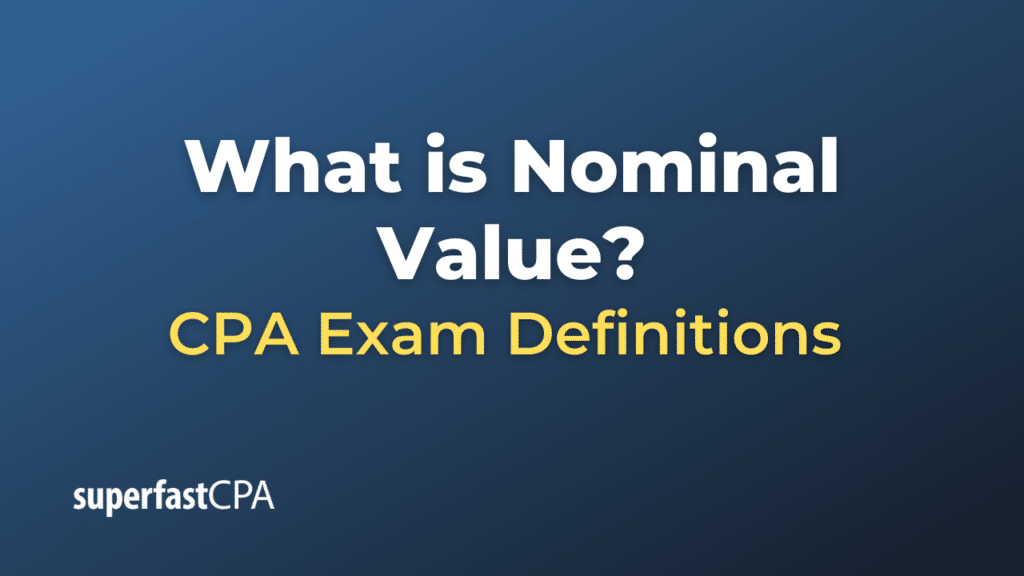Nominal Value
The nominal value, also known as the face value or par value, is the stated value of an issued security, such as a bond or stock. It represents the value of the security as indicated on the certificate or document at the time of issuance and does not change over time.
Here’s how it works for different types of securities:
- Bonds: The nominal value of a bond, often set at $1,000 or $100, is the amount that the issuer agrees to repay the bondholder when the bond matures. The bond may be sold at a price above (premium) or below (discount) its nominal value, depending on market conditions, but at the end of the bond’s term, the issuer is obligated to pay the nominal value.
- Stocks: The nominal value of a share of stock is an arbitrarily assigned value used mainly for accounting purposes. It is typically set at a very low amount, such as $0.01 per share, and bears no relationship to the market price of the stock. This is different from the market value of a stock, which fluctuates based on supply and demand dynamics in the stock market.
It’s important to note that the nominal value of a security has little relevance for investors; what really matters is the market value or the price they can buy or sell the security for on the open market.
Example of Nominal Value
Let’s consider two examples – one for a bond and one for a stock:
- Bond: Let’s say a corporation issues a bond with a nominal value of $1,000. This is the amount the corporation is obligated to repay the bondholder upon the bond’s maturity, regardless of the price at which the bond was originally sold or subsequently traded. If the bond has a 5% coupon rate, the issuer will pay interest of $50 per year (5% of $1,000) to the bondholder until the bond matures, at which point the issuer will repay the $1,000 nominal value.
- Stock: Imagine a company issues shares with a nominal value (also called par value) of $0.01 each. The company decides to issue 1,000,000 of these shares, so the total nominal value of all the shares would be $10,000. However, the market value of these shares – that is, the price investors are willing to pay for them – could be much higher, let’s say $10 per share. In this case, the company would raise $10,000,000 from the share issuance, even though the nominal value of all the shares is only $10,000.
In both examples, the nominal value provides a baseline or reference point for the security, but it does not necessarily represent the amount of money the investor will actually pay or receive. The market value, determined by supply and demand in the market, is generally a more meaningful figure for investors.













